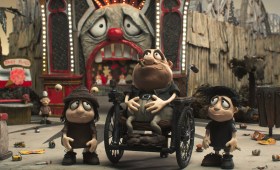Style vlogger Michelle Phan
A new global screen ecology led by YouTube stars once considered rank amateurs is dictating the future of entertainment and policy makers should take note.
Two million-plus people worldwide are creating careers for themselves making YouTube content on subjects like beauty, style, cooking, unboxing, games as well as so-called serious subjects such as science communication. They fascinate and enthral viewers.
The most influential are the vloggers who use their personalities to create a huge following and therefore are in demand as brand ambassadors.
The biggest style vlogger in the world is Michelle Phan who at 29 is a multi-millionaire entrepreneur. Her Facebook page has more than three million likes while her YouTube channel has attracted more than 8.3 million followers and more than a billion views.
Many Australians are in on the act. Zoe Foster Blake for one; she has more than 372,000 Instagram followers. Nicole Warne has 1.5 million Instagram followers and has been signed up by Qantas to create content for the airline. These people have a reach far beyond traditional channels and the people that follow them like and share those posts ad infinitum.
Brisbane-based beauty blogger Shani Grimmond is only 19 but has 662,000 followers on Instagram. A post she made last month on makeup mistakes to avoid had well over one million views.
This is not some fly-by-night trend. There has been a steady growth over the last seven years towards what I call ‘communitainment’ which combines communication and commercialism to create a new form of entertainment.
 We are witnessing a revolution in entertainment industries and the organisations that control the distribution of entertainment products and, as a result, the profits
We are witnessing a revolution in entertainment industries and the organisations that control the distribution of entertainment products and, as a result, the profits
The new players control the distribution of content across a range of money-spinning new online platforms and Hollywood is trying to buy-in.
The number of new participants, the professionalisation of amateur film makers, the commercialisation of content and the shift in advertising to online being seen in the US will be mirrored here and Australia needs to capture more of these opportunities for our industry,” he said.
There are some very good digital video producers in Australia and some of the pioneers are comedians. The Katering Show, featuring two women satirising cooking programs is a YouTube sensation. Their Thermomix sketch has racked up well over two million views and the show has been picked up by ABC TV after becoming the most watched ABC iview original series ever.
Online distribution giants like Netflix and Amazon were creating and commissioning their own content in addition to distributing Hollywood’s traditional film and television products. YouTube, meanwhile, has spawned an ever-growing number of multi-channel networks, the new aggregators that help content creators position themselves amongst the hundreds – even thousands – of new and rebranded TV, music and games channels.
YouTube is not the only player. Other platforms include Facebook, Vine, Instagram, Snapchat, Vimeo and Vessel which are available to develop subscriber/fan bases of significant size. The followings are always transnational in composition, often generating significant advertising and sponsorship revenue and, increasingly, the attention of mainstream media,” he said.
The YouTube scale metrics are extraordinary: more than one billion users, revenue estimated in 2015 at US$4 billion per annum, four billion videos watched per day, uploads of 400 hours per minute, downloads of 7752 hours per minute, and viewing now comes 50% from mobile devices.
At a local level, as at late 2015 Australia had 23 YouTube channels with over 1 million subscribers, and more than 100 channels with over 300,000 subscribers.
The top three Australian channels at the end of 2015 – HowToBasic (5.9 million), DangerDolan (4 million) and Troye Sivan (3.7 million) – had together garnered more than 1.7 billion video views. There are dozens of high-profile Australian YouTubers who exhibit a typical variety of professional positioning, strategy and specialisation in the main YouTube ‘verticals’ (vlogging, gameplay, style/how-to/popular knowledge, pranking, web series).
This is not the future of entertainment; it is already the main form of entertainment for a great many young people.
Professor Stuart Cunningham is writing a book on the changes in the way entertainment is made and communicated. He will lead a panel discussion at the CreateX Festival being held for the public opening of QUT’s expansion of its Creative Industries Precinct on Sunday 28 August.





